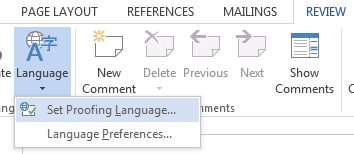- 3-minute read
- 29th June 2015
6 Quick Proofreading Tips for Beginners
Ever wondered how proofreaders spot so many mistakes that you missed in your own work? Here are six top tips you can use to improve your own proofreading!
1. Print Out Your Work
It sounds too simple to be true, but it’s so much easier to spot mistakes on paper than on a computer screen (especially if you have written the document yourself).
Seeing your work on paper gives you the ‘fresh eyes’ of a proofreader, helping you to spot all the little mistakes and inconsistencies that can make your work look unprofessional.
2. Read Backwards!
Start at the last line and read each sentence, working backwards until you reach the beginning. Reading the lines out of context like this will make mistakes jump out.
3. Check Your Referencing
It’s very easy to be inconsistent with referencing and citations. Make sure to check both the in-text citations (or footnotes, if you’re using them) and your reference list. You also need to make sure you have cited all sources clearly to prevent accidental plagiarism.
Find a referencing tool or check your university’s style guide if you are unsure about any of this.
4. Check the Proofing Language
The ‘proofing language’ is the language used by Microsoft Word to check for errors while you work. By default, this is often set to US English, so you should change it if you want to check for British spellings.
Find this useful?
Subscribe to our newsletter and get writing tips from our editors straight to your inbox.
Subscribe to Beyond the Margins and get your monthly fix of editorial strategy, workflow tips, and real-world examples from content leaders.
To do this, select the text you want to check and click on the language button at the bottom of the screen (or in the ‘Review’ tab).![]()
 This will open a new window, where you can select ‘English (United Kingdom)’ for British English.
This will open a new window, where you can select ‘English (United Kingdom)’ for British English.
5. Take a Break
There is no point trying to proofread your work when you have just finished. Ideally, you should leave enough time before the deadline that you can take a day off and then come back to proofread it later. You’ll spot errors you wouldn’t have noticed otherwise!
6. Read Out Loud
Like reading backwards, reading your essay out loud makes you approach it afresh, allowing you to spot mistakes you might have overlooked.
However, it may be best to use this technique in the privacy of your own home rather than in the middle of the library!
It is always hard to spot absolutely everything in your own work, though, so to be sure your work is error free, it may pay to get a professional to check it for you.




